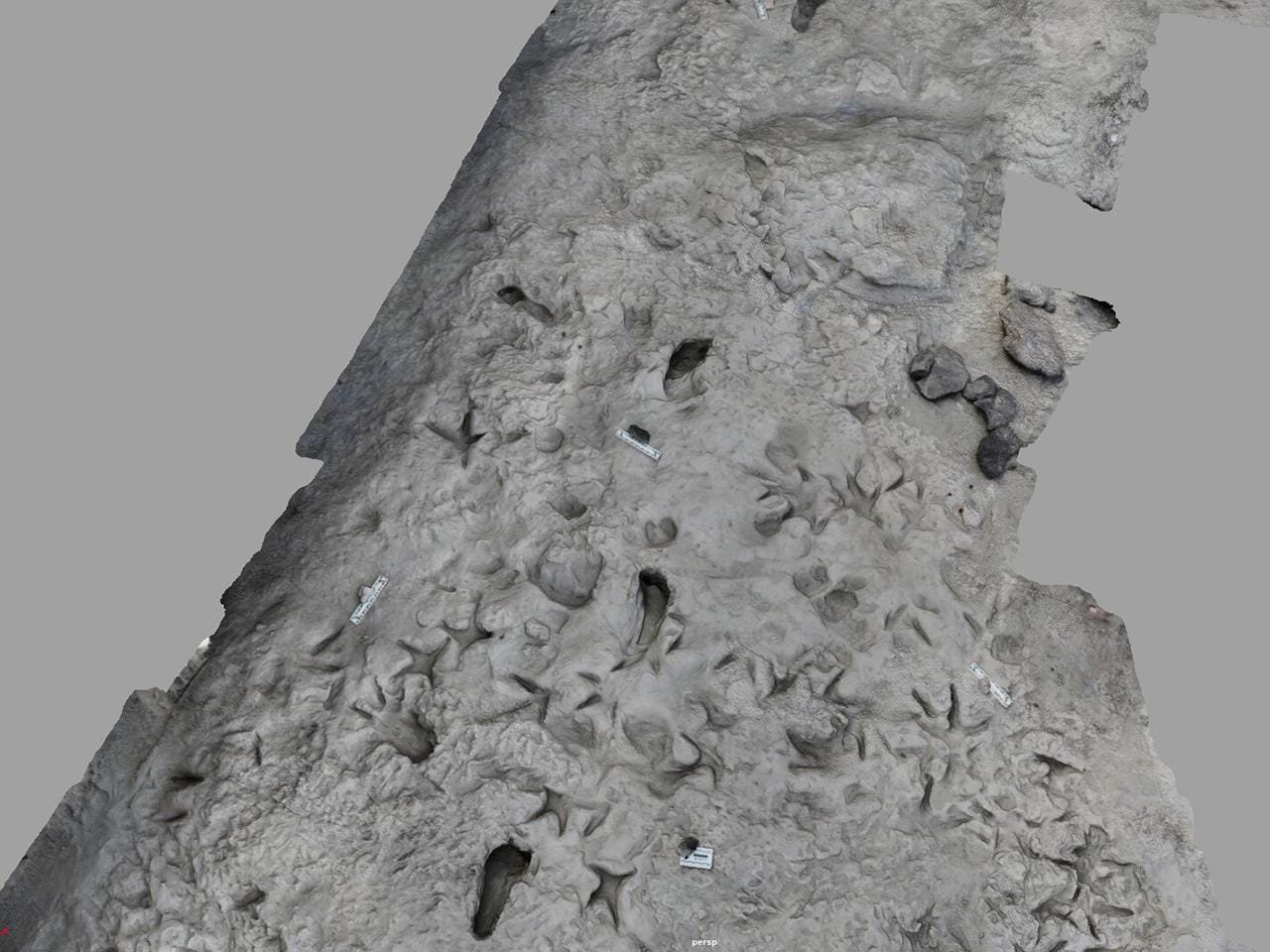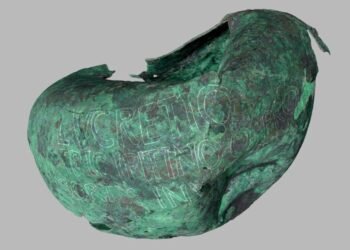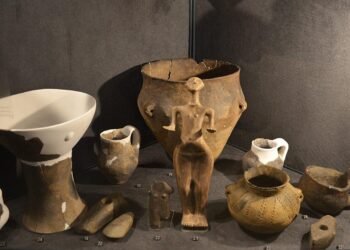On the ancient shores of Lake Turkana in Kenya, researchers have unveiled a rare glimpse into the lives of early hominins. Fossilized footprints, estimated to be 1.5 million years old, provide the first concrete evidence that two distinct hominin species, Homo erectus and Paranthropus boisei, coexisted in the same environment. This finding highlights interactions that may have ranged from peaceful coexistence to competition.

The discovery, made at Koobi Fora, was detailed in the journal Science by a team led by Kevin Hatala, a biology professor at Chatham University. In July 2021, researchers uncovered a hominin footprint alongside tracks made by other animals, such as large birds. A more detailed excavation in 2022 revealed a 12-print trackway and three isolated footprints, along with 94 nonhuman tracks from ancient birds and hoofed animals.
Hatala explained that the footprints were preserved in a “perfect zone of mud” near the lake’s edge, ensuring their survival under layers of fine sediment. “It’s hard to say exactly what they were doing,” he noted, “but they walked in the perfect area for their footprints to be made, which is very lucky for us.”
The researchers used advanced 3D imaging and comparative analysis to identify the species responsible for the footprints. The trackway of 12 prints, with a deeper forefoot strike and a slightly spread big toe, was attributed to Paranthropus boisei. Meanwhile, the three isolated footprints, featuring a heel-to-toe motion similar to modern humans, were linked to Homo erectus.
The footprints suggest that these species, with their differing diets and anatomical features, utilized the same habitat, possibly even crossing paths. Hatala emphasized that Paranthropus boisei, known for its robust jaws and plant-based diet, differed greatly from Homo erectus, which had a more human-like body and omnivorous diet.
Craig Feibel, a geologist and co-author of the study, noted that the footprints were formed within hours or days of each other, further supporting the idea that the two species occupied the area simultaneously. “Their presence on the same surface, made closely together in time, places the two species at the lake margin, using the same habitat,” Feibel said.
Hatala suggested their interactions might have resembled those of modern chimpanzees and gorillas, which exhibit both friendly and antagonistic behaviors when sharing the same territory.
This discovery marks the first physical evidence of direct coexistence between two hominin species, offering a new perspective on early human evolution. The findings challenge the assumption that hominin species avoided one another, instead hinting at complex relationships that shaped their survival and adaptation.
“These footprints tell us they lived in the same place, at the same time, and walked practically next to each other,” Pobiner remarked. “It’s impossible to go back in time to observe them, but having both of their footprints on the same surface is the next best thing.”
While Homo erectus thrived for another million years, Paranthropus boisei went extinct several hundred thousand years later. The reasons for this divergence remain unknown, but discoveries like these continue to unravel the mysteries of our shared past.























